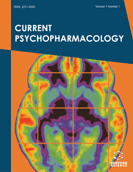Abstract
Pathological gambling (PG) affects about 0.2-2% of adults and the impact extends to family members, employers and society as a whole. Recent research has identified similarities in the pathophysiologies of PG and substance use disorders (SUDs). As such, findings regarding SUDs provide a framework for investigating PG. The aims of the manuscript are two-fold. First, we will briefly review neural systems implicated in PG. Cortico-limbic circuitry involving the ventral striatum, ventromedial prefrontal cortex, anterior cingulate cortex, and dorsolateral prefrontal cortex are discussed as are the neurotransmitters norepinephrine, serotonin, dopamine, opioids, glutamate, and gammaaminobutyric acid (GABA). This background will provide a framework for reviewing the psychopharmacological treatments that have been tested for efficacy and safety in treating PG. Of medications, the strongest data suggest the efficacy and tolerability of opioid antagonists in the treatment of PG, and other agents have varying degree of empirical support. As behavioral therapies have also shown efficacy, they will be briefly considered as well. Future research is needed to understand how treatments work in PG and for whom specific treatments might work best.
Keywords: Neuropsychopharmacology, pathological gambling, psychopharmacology, treatment, tobacco, alcohol, Diagnostic and Statistical Manual of Mental Disorders, trichotillomania, pyromania, Endogenous opioid, functional magnetic resonance imaging (fMRI), positron emission tomography (PET), Norepinephrine, catecholamine, Noradrenergic function
Current Psychopharmacology
Title: Pathological Gambling: Neuropsychopharmacology and Treatment
Volume: 1
Author(s): Scott A. Bullock and Marc N. Potenza
Affiliation:
Keywords: Neuropsychopharmacology, pathological gambling, psychopharmacology, treatment, tobacco, alcohol, Diagnostic and Statistical Manual of Mental Disorders, trichotillomania, pyromania, Endogenous opioid, functional magnetic resonance imaging (fMRI), positron emission tomography (PET), Norepinephrine, catecholamine, Noradrenergic function
Abstract: Pathological gambling (PG) affects about 0.2-2% of adults and the impact extends to family members, employers and society as a whole. Recent research has identified similarities in the pathophysiologies of PG and substance use disorders (SUDs). As such, findings regarding SUDs provide a framework for investigating PG. The aims of the manuscript are two-fold. First, we will briefly review neural systems implicated in PG. Cortico-limbic circuitry involving the ventral striatum, ventromedial prefrontal cortex, anterior cingulate cortex, and dorsolateral prefrontal cortex are discussed as are the neurotransmitters norepinephrine, serotonin, dopamine, opioids, glutamate, and gammaaminobutyric acid (GABA). This background will provide a framework for reviewing the psychopharmacological treatments that have been tested for efficacy and safety in treating PG. Of medications, the strongest data suggest the efficacy and tolerability of opioid antagonists in the treatment of PG, and other agents have varying degree of empirical support. As behavioral therapies have also shown efficacy, they will be briefly considered as well. Future research is needed to understand how treatments work in PG and for whom specific treatments might work best.
Export Options
About this article
Cite this article as:
A. Bullock Scott and N. Potenza Marc, Pathological Gambling: Neuropsychopharmacology and Treatment, Current Psychopharmacology 2012; 1 (1) . https://dx.doi.org/10.2174/2211556011201010067
| DOI https://dx.doi.org/10.2174/2211556011201010067 |
Print ISSN 2211-5560 |
| Publisher Name Bentham Science Publisher |
Online ISSN 2211-5579 |
 57
57
- Author Guidelines
- Bentham Author Support Services (BASS)
- Graphical Abstracts
- Fabricating and Stating False Information
- Research Misconduct
- Post Publication Discussions and Corrections
- Publishing Ethics and Rectitude
- Increase Visibility of Your Article
- Archiving Policies
- Peer Review Workflow
- Order Your Article Before Print
- Promote Your Article
- Manuscript Transfer Facility
- Editorial Policies
- Allegations from Whistleblowers
- Announcements
Related Articles
-
Selective Pharmacological Inhibition of the Pacemaker Channel Isoforms (HCN1-4) as New Possible Therapeutical Targets
Current Medicinal Chemistry Neuropharmacology of Stress-Induced Mucosal Inflammation: Implications for Inflammatory Bowel Disease and Irritable Bowel Syndrome
Current Molecular Medicine Myelination in Bipolar Patients and the Effects of Mood Stabilizers on Brain Anatomy
Current Pharmaceutical Design Neuropsychiatric Disturbances in Alzheimer’s Disease: What Have We Learned from Neuropathological Studies?
Current Alzheimer Research Recent Progress in the Development of Subtype Selective Nicotinic Acetylcholine Receptor Ligands
Current Drug Targets - CNS & Neurological Disorders Calcium-engaged Mechanisms of Nongenomic Action of Neurosteroids
Current Neuropharmacology Nutritional Approaches to Modulate Oxidative Stress in Alzheimers Disease
Current Alzheimer Research Search and Rescue: Identification of Cannabinoid Actions Relevant for Neuronal Survival and Protection
Current Neuropharmacology The Role of the Calcium-Sensing Receptor in Bone Biology and Pathophysiology
Current Pharmaceutical Biotechnology Recent Advances in the Treatment of Amyotrophic Lateral Sclerosis. Emphasis on Kynurenine Pathway Inhibitors
Central Nervous System Agents in Medicinal Chemistry Protein Interaction Studies for Understanding the Tremor Pathway in Parkinson’s Disease
CNS & Neurological Disorders - Drug Targets A New Combined Therapeutic Strategy of Governor Vessel Electro-Acupuncture and Adult Stem Cell Transplantation Promotes the Recovery of Injured Spinal Cord
Current Medicinal Chemistry Role of Nitric Oxide in Patients with Schizophrenia- a Systematic Review of the Literature
Current Psychiatry Reviews Neuroimaging of Cancer Patients for Psychosocial Support and Patient Care
Current Medical Imaging The Role of Neuroendocrine Cells in Prostate Cancer: A Comprehensive Review of Current Literature and Subsequent Rationale to Broaden and Integrate Current Treatment Modalities
Current Medicinal Chemistry Exploration of Umbelliferone Based Derivatives as Potent MAO Inhibitors: Dry vs. Wet Lab Evaluation
Current Topics in Medicinal Chemistry From Physiome to Pathome: A Systems Biology Model of Major Depressive Disorder and the Psycho-Immune-Neuroendocrine Network
Current Psychiatry Reviews Catechol-O-Methyltransferase (COMT)-Mediated Methylation Metabolism of Endogenous Bioactive Catechols and Modulation by Endobiotics and Xenobiotics: Importance in Pathophysiology and Pathogenesis
Current Drug Metabolism Choline Alphoscerate (Alpha-Glyceryl-Phosphoryl-Choline) An Old Choline- containing Phospholipid with a Still Interesting Profile As Cognition Enhancing Agent
Current Alzheimer Research Gastric Mucosal Protection: From Prostaglandins to Gene-Therapy
Current Medicinal Chemistry


























